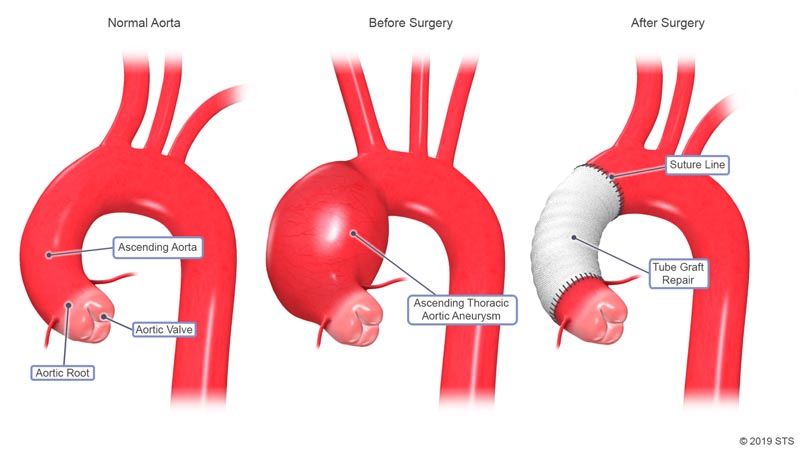Key points Ask What is the risk of aortic dissection (AD) and death from all causes for nonsyndromic patients with unrepaired ascending thoracic aortic aneurysm (TAA), overall and by TAA size? Findings In this cohort study, the overall absolute risk of AD was low. Although the risk of AD and all-cause death was associated with larger aortic sizes, there was a tipping point at 6.0 cm . Meaning The findings of this study support consensus guidelines that recommend surgical intervention at 5.5 cm in nonsyndromic patients with TAA; Earlier prophylactic surgery should be performed only selectively in the nonsyndromic population, given the nontrivial risks associated with aortic surgery. |

The KP-TAA study
Importance
The risk of adverse events from ascending thoracic aortic aneurysm (AAT) is not well understood but drives clinical decision making.
Aim
To evaluate the association of TAA size with outcomes in nonsyndromic patients in a large non-referral health care delivery system.
Design, environment and participants
The Kaiser Permanente Thoracic Aortic Aneurysm (KP-TAA) Cohort Study was a retrospective cohort study at Kaiser Permanente Northern California, a fully integrated healthcare delivery system that insures and provides care to more than 4.5 million people.
Nonsyndromic patients from a regional TAA safety net monitoring system were included. Imaging data, including maximum TAA size, were merged with electronic health record (EHR) and complete death data to obtain demographic characteristics, comorbidities, medications, laboratory values, vital signs, and subsequent outcomes.
Unadjusted rates were calculated and the association of TAA size with outcomes was assessed in multivariable competing risk models that categorized TAA size as a baseline and time-updated variable and accounted for potential confounders.
TAA Size Exhibitions .
Main results and measures
Aortic dissection (AD), death from all causes and elective aortic surgery.
Results
Of 6,372 TAA patients identified between 2000 and 2016 (mean [SD] age, 68.6 [13.0] years; 2,050 women [32.2%] and 4,322 men [67.8%]), the mean initial size (SD) TAA was 4.4 (0.5) cm (828 individuals [13.0% of the cohort] had a baseline TAA of 5.0 cm or greater and 280 [4.4%] 5.5 cm or more).
Rates of AD were low over a mean (SD) of 3.7 (2.5) years of follow-up (44 people [0.7% of cohort]; incidence of 0.22 events per 100 person-years).
Larger baseline aortic size was associated with increased risk of AD and all-cause death in multivariable models, with an inflection point at risk of 6.0 cm.
The estimated adjusted risks of AD within 5 years were 0.3% (95% CI, 0.3-0.7), 0.6% (95% CI, 0.4-1.3), 1, 5% (95% CI, 1.2-3.9), 3.6% (95% CI, 1.2-3.9), CI, 1.8-12.8) and 10.5% ( 95% CI, 2.7-44.3) in patients with AAT of 4.0 to 4.4 cm, 4.5 to 4.9 cm, 5.0 to 5. 4 cm, 5.5 to 5. 9 cm and 6.0 cm or more, respectively, in updated models.
Rates of the composite outcome of AD and death from all causes were higher than for AD alone, but a similar inflection point was observed for increased risk at 6.0 cm.
Conclusions and relevance
|















